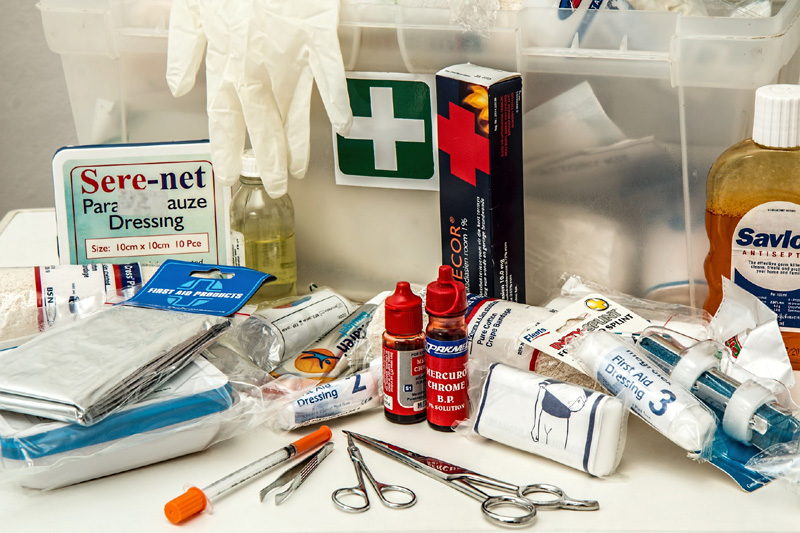It’s a fact of life that emergencies happen. When they do, you need to be prepared. That means having an emergency kit with the supplies you’ll need to get through those tough times. But what should go into your emergency kit? What are the absolute essentials? Here is a list of medical supplies every household should have, just in case.

Test Strips
If you have diabetes, you know that keeping track of your blood sugar levels is critical to your health. That’s where test strips come in. Test strips measure the amount of sugar in your blood, and they come in various brands and types.
There are three main types of test strips: glucose meters, lancets, and control solutions. All three components are essential for properly monitoring your blood sugar levels. Having a range of test strips supplies of medical uses will ensure that you are prepared for whatever may come your way. This should include a variety of supplies, such as lancets and lancing devices, which allow you to prick your finger easily and painlessly.
Bandages and Gauze
Bandages come in various shapes and sizes, each designed for a specific purpose. There are bandages for cuts, abrasions, blisters, and burns. And some bandages even come with adhesive pads that can be used to hold the bandage in place. Gauze is also versatile and can treat a wide range of injuries. Depending on the patient’s needs, it can be fashioned into pads, wraps, or compresses.
Both bandages and gauze should be stored in an easily accessible location so they can be quickly accessed in an emergency. And both should be replaced regularly so that you always have fresh supplies.
Thermometer
A thermometer is another essential medical supply. Whether you are dealing with a minor cold or a more severe condition, it’s important to be able to monitor your body temperature. There are several types of thermometers available, including mercury and digital models. Whichever type you choose, ensure that it is stored in an easy-to-reach location so you can use it quickly if needed.
Antibiotic Ointment
Antibiotic ointment is a thick, white cream applied directly to the skin. It contains two types of antibiotics: erythromycin and bacitracin. Erythromycin is a broad-spectrum antibiotic that kills many bacteria, while bacitracin is a narrower-spectrum antibiotic that targets explicitly gram-positive bacteria.
Antibiotic ointment can be used to treat a variety of skin conditions, including acne, psoriasis, and eczema. It works by killing the bacteria that cause these conditions, thus reducing inflammation and helping the skin to heal. Antibiotic ointment should be applied two or three times a day, depending on the severity of the condition.
Cold Pack
A cold pack is a simple yet effective way to treat various injuries and illnesses. Cold packs are used to reduce swelling and inflammation and to help relieve pain. They can be used for many conditions, including muscle aches and pain, arthritis, headaches, toothaches, and fever. Cold packs can also be used to reduce the symptoms of the common cold or flu.
There are two types of cold packs: reusable and disposable. Reusable cold packs can be filled with ice water or gel, while disposable cold packs contain a chemical that turns into ice when exposed to air. Both types are effective at reducing swelling and inflammation. However, reusable cold packs tend to be more expensive than disposable ones.
Antihistamines
Antihistamines are a medication used to treat various allergies, including hay fever and food allergies. They work by blocking your body’s histamine receptors, reducing inflammation and other allergy symptoms. There are many different types of antihistamines available, each with its own unique set of side effects.
Antihistamines’ most common side effects include drowsiness, dizziness, and dry mouth. If you take an antihistamine for the first time, start at a low dose and gradually increase it over time to minimize these side effects. And if you experience any severe side effects or symptoms that do not go away after taking your medication, be sure to contact your doctor immediately.
Pain Relievers
Pain relievers are an essential medical supply that every household should have. Whether you are dealing with a minor headache or a more severe injury, pain relievers can help to reduce inflammation and alleviate discomfort. Some of the most common types include aspirin, acetaminophen, and ibuprofen. While each of these pain relievers is effective at treating certain types of pain, they all have different side effects, so be sure to consult your doctor before taking any of them.
Keeping a well-stocked medicine cabinet at home is vital, as it can help you treat minor injuries and illnesses without having to go to the doctor. And by doing so, you can save money on healthcare costs while reducing your risk of developing a severe condition. So be sure to always have these essential items on hand, and be prepared for whatever life throws your way.
Like this post? Subscribe to this blog by clicking HERE.
Let’s stay connected: